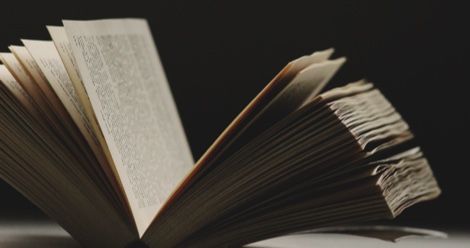
The Invisible Fat Girl: Growing Up Missing From Books
I was always a “big girl.” I played sports, so I was rarely deemed fat or chubby out loud, but I was a “big girl.” I was too tall and too curvy too soon, packed with muscle and fury, and in a small school in a rural community where my uniform was snug and my ponytail was messy, that was enough to isolate me from my peers. So I turned to books instead.
At recess, I made myself a home at the lone picnic table in the parking lot and lost myself in reading, trying to figure out how these girls did it. How these girls—the ones in my books I loved—navigated growing up and crushing on boys and finding friends. But I could never find girls like me. The girls in my books were tall, thin, porcelain-skinned, and effortlessly cool. I was acne-prone, gap-toothed, unevenly tanned from soccer uniforms, and definitely not sample sized.
Carolyn Mackler’s The Earth, My Butt, and Other Big, Round Things, one of the first books I found that featured a girl my size, became a staple on my shelf. The main character’s struggle to fit in with friends and family mirrored my own, and I read that book cover to cover (several times), trying to absorb everything I could in the hope that it would somehow fix me.
I empathized with Carmen in The Sisterhood of the Traveling Pants, wanting her to know that I understood her hesitation in trying on the magical pants that fit all her friends, that I too could never go shopping with classmates, could never try on the same clothes they did. I didn’t want to be in the dressing room with them, lest they see my round and jiggly thighs, low-cut denim refusing to budge past my butt.
Early in high school, I discovered Meg Cabot’s Size 12 Is Not Fat, and I wanted to proclaim that mantra to the world. I finally felt seen—this book said what I knew in my heart right there in the title, that I was worthy of being the protagonist of my own story, a protagonist who kicked ass, solved mysteries, and fell in love no matter what size she was. But it seemed to be the only book out there that said it, and soon after I finished the book, I was back to square one. In the real world, I was still fat, still different, still unworthy of having my story told.
Never being able to read about big or fat or curvy or plus-size or even athletic girls prevented me from ever picturing someone who looked like me while reading. I was conditioned to learn that those girls don’t exist, that stories about “big girls” like me aren’t important, aren’t “supposed” to be in books. I felt invisible and other, like I didn’t belong, even in this reading world that was only mine.
To this day, I still struggle to find characters who I could see myself resembling, and many times wonder if the lack of body size in my reading as a kid affected my own body image today. A perpetual dieter and vegetable lover (and consumer of tacos and grocery-store cake), I think about my body and its size every single day, wondering why I don’t look like other people, why my body isn’t the type that is featured in fun adventures or magical stories. I am happier, healthier, and in a better place of acceptance than I was as a young teen, but I have a long way to go in viewing my own image as normal and beautiful—in part because there is still such a lack of body diversity in modern literature and storytelling.
There are a few newer releases—Leah on the Offbeat by Becky Albertalli, Fat Girl on a Plane by Kelly deVos, and To Be Honest by Maggie Ann Martin—that prominently feature “big girls” like me (on the cover, no less!). Memoir seems to be the most popular category that features fat girls, like Roxane Gay’s Hunger and Chrissy Metz’s This Is Me. But even that category is wildly lacking, especially in including people of color.
We’re making strides, but we still have a long way to go until the shelves in bookstores loosen their belt notches a bit and let the fat girls play, too.














